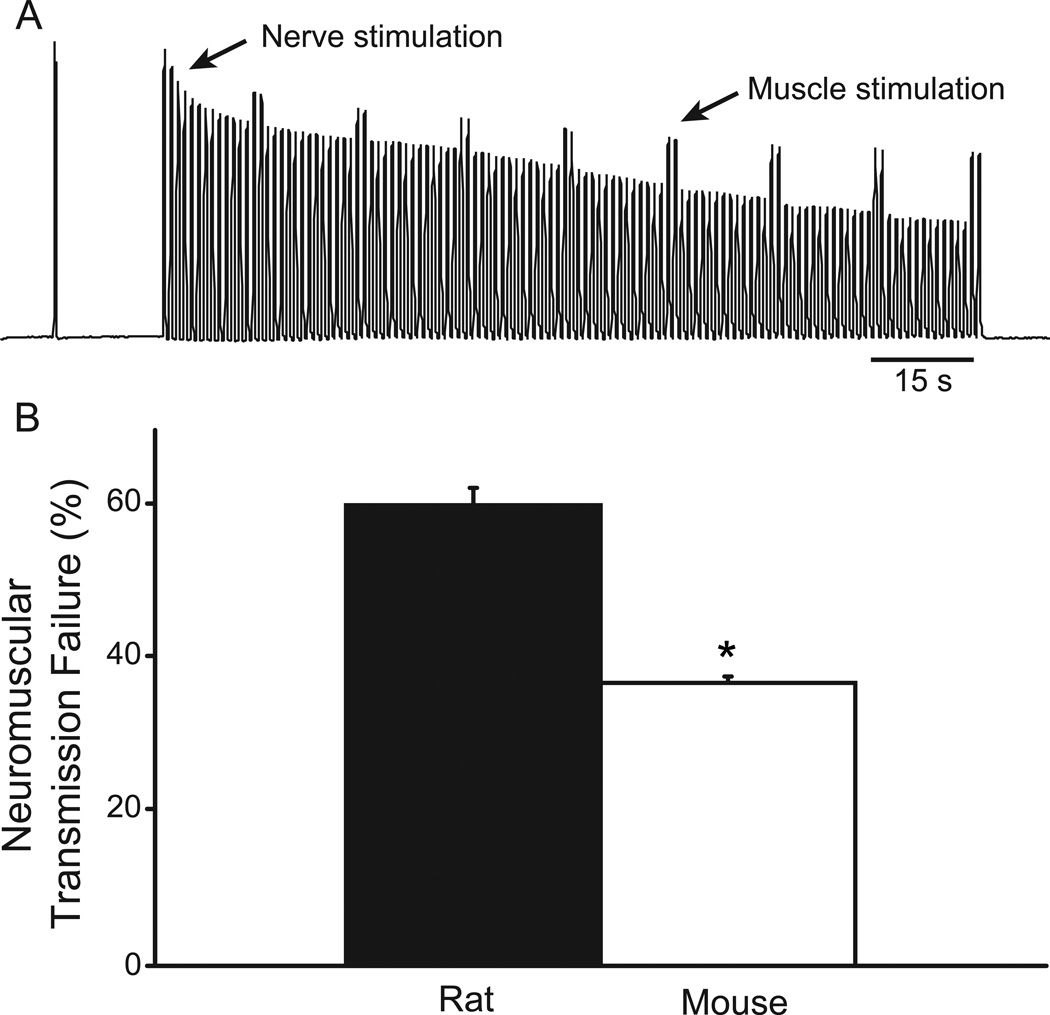Fig. 3.
Contribution of neuromuscular transmission failure to DIAm fatigue in the rat and mouse. A. Representative tracing of force developed by the DIAm from an adult mouse that was electrically stimulated (40 Hz in 330-ms trains) indirectly via the phrenic nerve (every 1 s) and directly via plate electrodes (every 15 s). The DIAm generates decreasing force with repetitive stimulation, indicative of fatigue. The difference in the relative force elicited by direct and nerve (indirect) stimulation reflects neuromuscular transmission failure (see Methods). Neuromuscular transmission failure was determined following 2-min of repetitive stimulation. B. Mean (±SE) neuromuscular transmission failure in adult rat (n=6) and mouse (n=8) phrenic nerve-diaphragm muscle preparations. Neuromuscular transmission failure was significantly lower in the mouse compared to the rat. *, denotes statistically significant difference compared to the rat.

